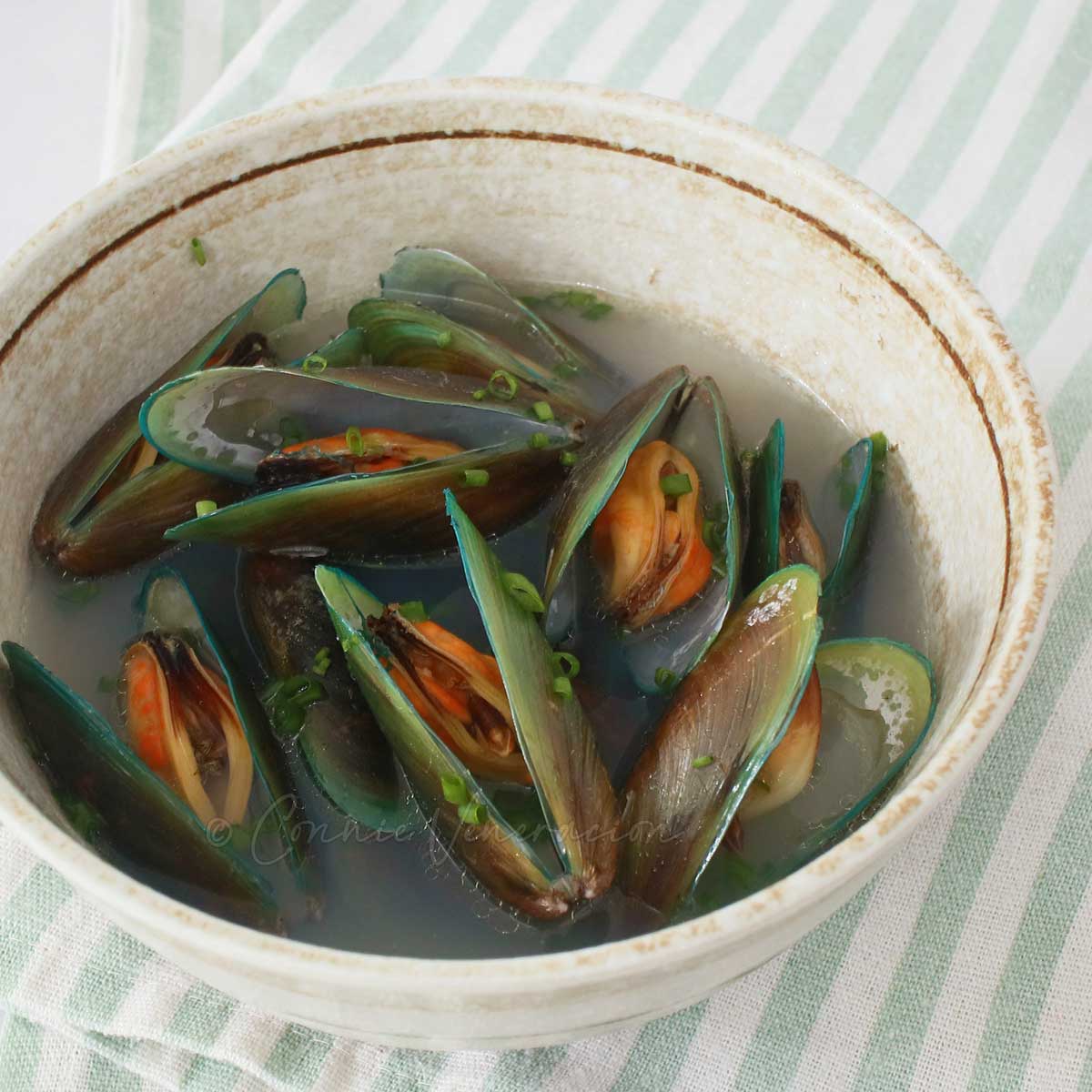Tinolang tahong and sinabawang tahong are only two of the names by which this simple and rustic Filipino soup is called in some food blogs. We didn’t have a name for it when I was a child. But it was on our dining table often. I still cook it the way my father did. And I still prep mussels as carefully as he did.
You must have heard the term “debearded mussels” or “debeard the mussels” or “debearding mussels” before. It might sound something from another planet because how the heck could mussels have beard, right? Do they even have faces on which beard could grow? Mussels don’t have faces like we do but they do have something that resembles human beard.
What we call “beard” is byssus — filaments that mussels (and a few other molluscs) grow so they can attach themselves to rocks and other solid surfaces. A strand is about the same size of human hair so we can forgive whoever first used the term “beard” to refer to byssus.

How the byssus is formed is a fascinating process but the bottomline is that it isn’t edible. You need to tug it out and discard it. How easily it comes off depends on how tightly shut the mussel shell is. Newly harvested mussels will have very tightly shut shells and removing the byssus is difficult. You want the mussels to open their shells a bit for easier removal of the dreaded beard.
I rinse the mussels first, place them in a bowl, cover them with water and sprinkle in a tablespoon or two of rock salt. I cover the bowl loosely and place it in the fridge for an hour or two. I take the mussels out of the fridge and rinse them repeatedly until the water is clear. At that point, the shells are partially open and it is easier to tug off the beard. With the beards discarded and any trapped silt inside the mussel shells removed from the repeated rinsing and shaking, the mussels are ready for the pot.

But, first, a spice base for the broth. Slices of ginger and the bottom third of scallion stalks are sauteed until aromatic. Then, water is poured in. Yes, just plain water. The real flavor comes later after the mussels are added. So, just plain water.

Fish sauce goes into the pot. The beginnings of a beautiful broth is now in place. But, to heighten the flavors, I allow the mixture to simmer for about ten minutes before adding the mussels. By the time the liquid comes to a full boil, the mussel shells are just starting to open. I cover the pot, turn off the stove and leave the mussels to cook in the residual heat. That way, they never get overcooked.
Mussel soup with ginger scallion broth

Ingredients
- 2 tablespoons cooking oil
- 1 two-inch knob ginger sliced
- 12 to 15 stalks scallions cut into thirds
- ¼ cup fish sauce
- ¼ teaspoon white pepper
- 1 ½ kilograms fresh mussels cleaned and debearded
Instructions
- Heat the cooking oil in a pot.
- Saute the ginger and bottom third of the scallion stalks until aromatic.
- Pour in eight cups of water and the fish sauce.
- Bring to the boil, lower the heat, cover and simmer for ten minutes.
- Turn up the heat, drop in the mussels and bring to the boil.
- Once the mussel shells open a bit, cover the pot, turn off the heat and leave the mussels to cook in the hot broth for five minutes.
- Take the top portions of the scallions stalks and thinly slice.
- Taste the broth and add more fish sauce, if needed.
- Ladle the mussels and broth into bowls, sprinkle in the sliced scallions and serve.







